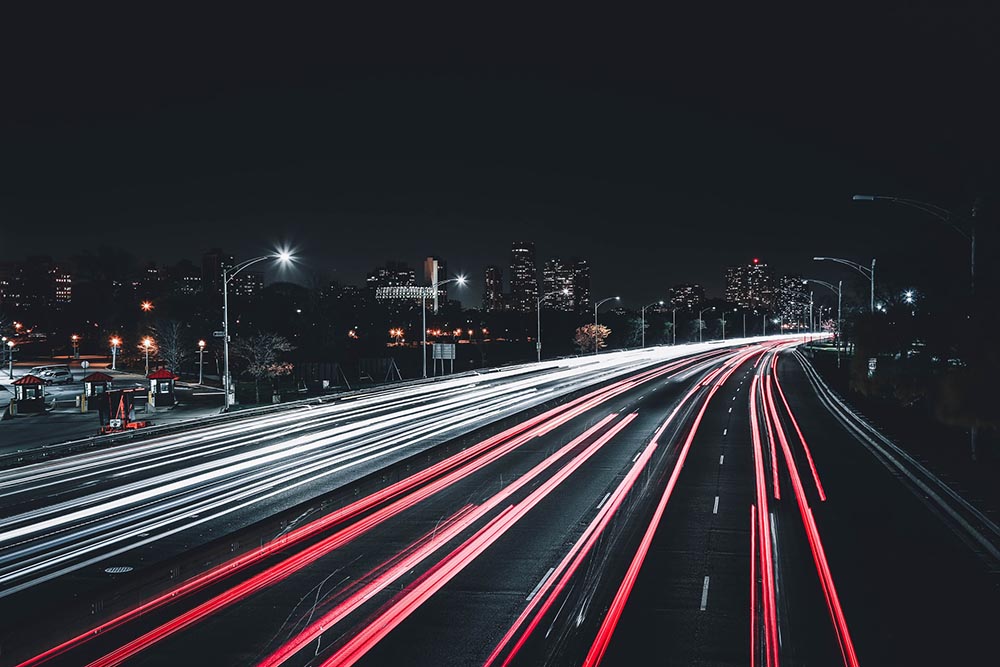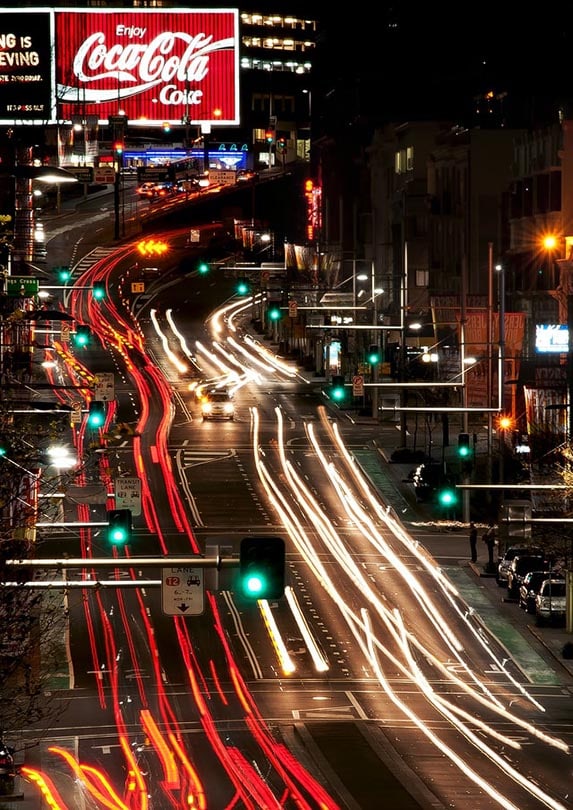What Is Long-Exposure Photography? Photography Basics Explained
Last Updated on

While camera manufacturers love touting how fast their camera shutter speed can be, sometimes that’s the last thing THAT you want. Slowing down the shutter speed is the basic idea behind long-exposure photography, and it can create unique pictures that you can’t capture any other way.
But what exactly is long-exposure photography, when do you want to use it, and how do you even do it? We answer all those questions for you here, so you can head out and try your own hand at long-exposure photography.
It’s a great skill to master and it can help you create memorable and long-lasting images.

How Does It Work?
Long-exposure photography is about leaving the shutter open for longer periods of time. Doing this gives more time for light to enter the lens and camera and reach the sensor.
Leaving the shutter open for a longer amount of time lets you bring in fainter amounts of light, and if you leave the shutter open long enough, you can even pick up light that your eyes can’t see!
This is very the case in astrophotography, when photographers leave the shutter open for hours to capture faint nebulae, galaxies, and other far-off celestial bodies.
That’s an “extreme” example of long-exposure photography, though, and you don’t need to leave the shutter open for quite that long for it to qualify. Even keeping the shutter open for a few seconds instead of the fraction of a second that it usually opens and shuts will qualify!

What Are the Different Types of Long-Exposure Photography?
There are many different types of long-exposure photography. While it’s a challenging type of photography to master, it’s extremely versatile and you can use it in many different settings.
For instance, you can use it in astrophotography, as well as during daytime scenic shots or to capture motion in a busy city setting.
In short, anytime that you want to try to capture everything that happens over the length of an exposure is an excellent choice for long-exposure photography. It’s also great in low-light situations because it gives more time for the light to enter the sensor and record what’s going on.
Other popular types of long-exposure photography include light painting, architecture shots, and water photography. You can use it to blur backgrounds if you keep the subject still or blur the foreground with movement while keeping the background in place.
Light painting opens up a whole new world of possibilities with LEDs, flashlights, cars, or just about any other source of light.
With so many different potential applications for long-exposure photography, your imagination is the only real limitation!
Where Is It Used?
Due to the wide range of applications for long-exposure photography, photographers use it in many different settings. It’s a technique that hobbyists, amateurs, and professional photographers can all use.
You’ll likely need a DSLR or a mirrorless camera for long-exposure photography because you have to change the shutter speed for a delayed photo. It’s not that you can’t use other types of cameras, but they usually don’t allow you to go in and manually change the settings.
For specific applications, almost every astrophotography picture comes from a long-exposure shot, as does any type of photo with light art. However, with light art, it could be the result of photo editing, not long-exposure photography.

Advantages of Long-Exposure Photography
The advantage of long-exposure photography is that you get to capture things that occurred over an extended period of time in a single photo. You can also use it to capture images in low-light situations. With traditional photography, the images wouldn’t show up, and since the source of the light can be from far away, it’s not something that you can solve with a flash. Long-exposure photography can be the only way to get pictures in those situations.
Disadvantages of Long-Exposure Photography
While there are plenty of perks to long-exposure photography, it’s not the ideal choice for every situation. Anytime that you want a crisp image of a moving object, long-exposure photography is a terrible choice.
Another disadvantage is that you need a tripod or another device to hold your camera perfectly still. Any kind of movement will blur and ruin the entire photograph.
Finally, with long-exposure photography, you’ll need to adjust each setting manually. This takes a bit of practice to get right, and long-exposure photography simply isn’t the easiest type to master.

Frequently Asked Questions (FAQs)
We understand the degree of difficulty that comes with long-exposure photography, so we answered a few of the most frequently asked questions for you here.
What Is Considered Long-Exposure Photography?
There’s no set definition for when something becomes “long-exposure photography,” as it’s more of a subjective thing. However, it’s not as long as you might think.
Since most pictures use a shutter speed that’s only a fraction of a second, even a 3-second shutter speed is quite a long exposure.
Is Long-Exposure Photography All About Shutter Speed?
Yes! While there’s more to long-exposure photography to get a great image, when you’re calling something “long exposure,” all you’re talking about is significantly slowing down the shutter speed. Instead of an instant open and close, long-exposure photography is about creating a delay between the opening and closing of the shutter.
So, when you think of long-exposure photography, just think of a slow shutter speed and you understand the general principle.
What Is Long-Exposure Photography Good For?
There are many applications where long-exposure photography is ideal. If you’re trying to smooth out water or clouds, it’s great. If you want to capture far-out objects in space, it’s pretty much your only choice! It’s also good for light art.

A Quick-Reference Guide
- Astrophotography
- Macro photography
- Nighttime photography
- Other low-light situations
- Sporting events
- Portraits
- Candid photography
- Any time there’s a moving subject

Conclusion
Now that you know more about long-exposure photography, it’s time for you to head out and see how you can use it in your pictures! Just keep in mind that it’s not the easiest skill to master, so take your time and expect a few mistakes at first.
When you capture the perfect image with long-exposure photography, all that hard work and patience will be worth it.
Featured Image Credit: Jake Blucker, Unsplash
About the Author Robert Sparks
Robert’s obsession with all things optical started early in life, when his optician father would bring home prototypes for Robert to play with. Nowadays, Robert is dedicated to helping others find the right optics for their needs. His hobbies include astronomy, astrophysics, and model building. Originally from Newark, NJ, he resides in Santa Fe, New Mexico, where the nighttime skies are filled with glittering stars.
Related Articles:
What Is the Best Binocular Magnification for Hunting? Optical Features Explained
How to Clean a Refractor Telescope: Step-by-Step Guide
How to Clean a Telescope Eyepiece: Step-by-Step Guide
How to Clean a Rifle Scope: 8 Expert Tips
Monocular vs Telescope: Differences Explained (With Pictures)
What Is a Monocular Used For? 8 Common Functions
How to Clean a Telescope Mirror: 8 Expert Tips
Brightfield vs Phase Contrast Microscopy: The Differences Explained
